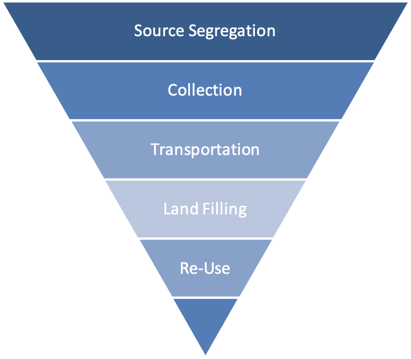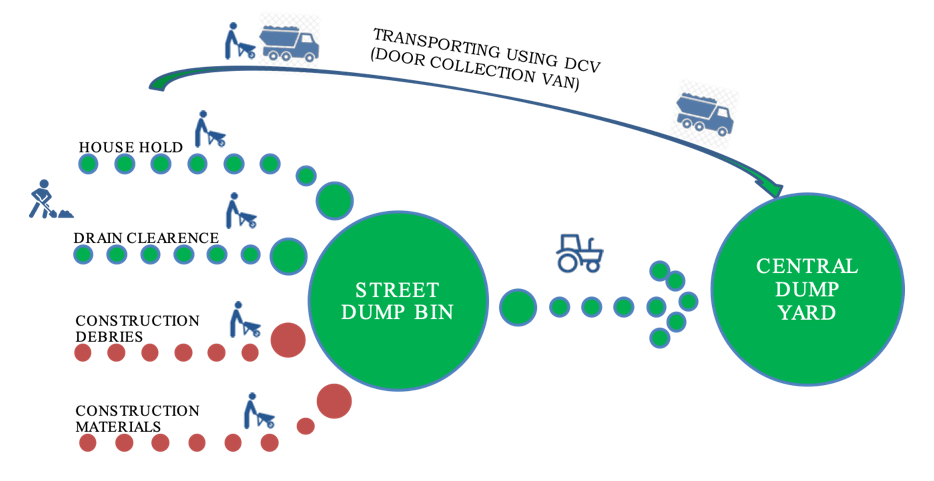Month: December 2018
Continuous economic activities, rapid urbanization, population growth and the rise of living standards have greatly accelerated the generation of municipal solid waste (MSW). This poses considerable challenges for governments, civil society and private sectors to protect and promote the environment and sustainable development.
Waste recently is more considered as a resource rather than garbage of no value (Zaman, 2010). Waste as a resource, refers to resource recovery that can be converted into other material and energy. MSW has great potentials to transform into other form of resource and energy through proper treatment. Additionally, increasing challenges of climate change resulting from MSW have raised people’s attentions on waste management.
Understanding the scenario
The growing quantities of MSW will have a significant impact on the development of social, environmental and economic aspects. However, there are several critical issues, such as deficiency of information and knowledge, less developed policy and strategic planning, lack of technology support, and lack of financial investment.
Waste management hierarchy is a generally accepted guiding principle for prioritizing waste management practices to achieve minimum adverse environmental and health impacts from wastes. The waste management hierarchy in Figure 1 shows the preferred order of waste management practice, from most to least preferred.

But most importantly for municipalities and authorities, tracking and monitoring that the work is getting done is of prime importance. Inovar was brought into situation to provide a smart IoT based solution to ensure all their financial investments are at work and Waste management is being carried out as expected.
 Solution
Solution
Inovar quickly realized, Waste containers are everywhere—behind restaurants, retail stores, and hotels, at office buildings, and on construction sites. Even the collection process and transportation routes taken, were erratic and not optimized to reduce cost and maximize benefit.
We proposed a 2 part system, First part was to handle the waste level and the collection team. Second part was to manage the transportation of waste to the designated area with efficiency.
For waste collection procedure, we implemented sensor based technology in the collection units to assess the level of the waste. For ground crew cleaning public areas, we created a mobile based attendance and reporting element which can track their locations and real time and ensure that there are working as per the plan laid out.
For Logistics we again used IoT devices, to track trip mileage/fuel consumption, real time location tracking, engine idle time and deviation from planned route or tasks.
Finally, In the cloud, the real time analysis has to be carried out to generate various reports, alerts & notifications like- area waste collection activity, Daily attendance, vehicle movements, seasonal or function reports on waste, segregation reports etc. which can help the Municipal corporation with better strategies for waste management.